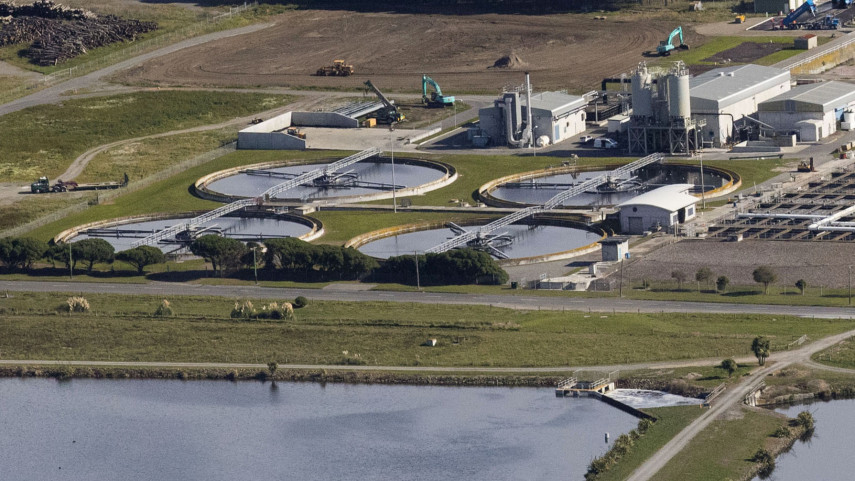
Way forward identified for wastewater treatment plant modifications

Share this story
A plan is under way to decrease odours and improve the treatment of wastewater over the medium term at the fire-damaged Christchurch wastewater treatment plant.
Christchurch City Council Head of Three Waters Helen Beaumont says after considering a range of options, Council staff plan to convert two of the plant’s four clarifier (or secondary contact) tanks into aeration tanks.
“We intend to install four aerators in each of the two tanks, which will pump more oxygen into the wastewater earlier in the process. We expect this will help decrease the unpleasant smells and improve the quality of the wastewater before it enters the ponds,” Ms Beaumont says.
“The November 1 fire destroyed both of the trickling filters, which played a really important role in the wastewater treatment process. This work-around should provide most of the treatment capacity that we’ve lost.
“It’s likely to be years before we’re able to fully rebuild or replace these trickling filters, but we believe the modifications we’re planning to make to the plant will improve the present process and be an adequate medium-term solution.”
To convert the clarifiers into aeration basins, a crane will be used to lift four 75kw mixer aerators in each clarifier. An additional 600kw power supply will be required to enable the pumps to continuously operate.
Once wastewater passes through these new aeration basins, new submersible pumps will push the water through to the remaining two clarifier tanks.
“We’re hoping to have this new system up and running by the end of March 2022,” says Ms Beaumont.
“We’ve also sourced three aeration pumps for the oxidation ponds and will require an additional 10 to churn more oxygen into the waters at this final stage of the process. These could take up to nine months to procure and install.”
Ms Beaumont says poly aluminium chloride will continue to be added to the wastewater at two key points in the process.
This ‘poly-dosing’ settles more of the suspended solids and reduces the organic loading of the supernatant wastewater - the clear liquid from the top - that now bypasses the trickling filters and goes on to the secondary contact tanks.
The team is also adding hydrogen peroxide – a compound that naturally breaks down into water and oxygen – to the wastewater before it’s discharged into the oxidation ponds.
Multiple investigations are under way into the cause of the fire. The findings of these investigations will be released in due course.
For more information and updates on the recovery from the wastewater treatment plant fire, visit ccc.govt.nz/wastewaterfire.
